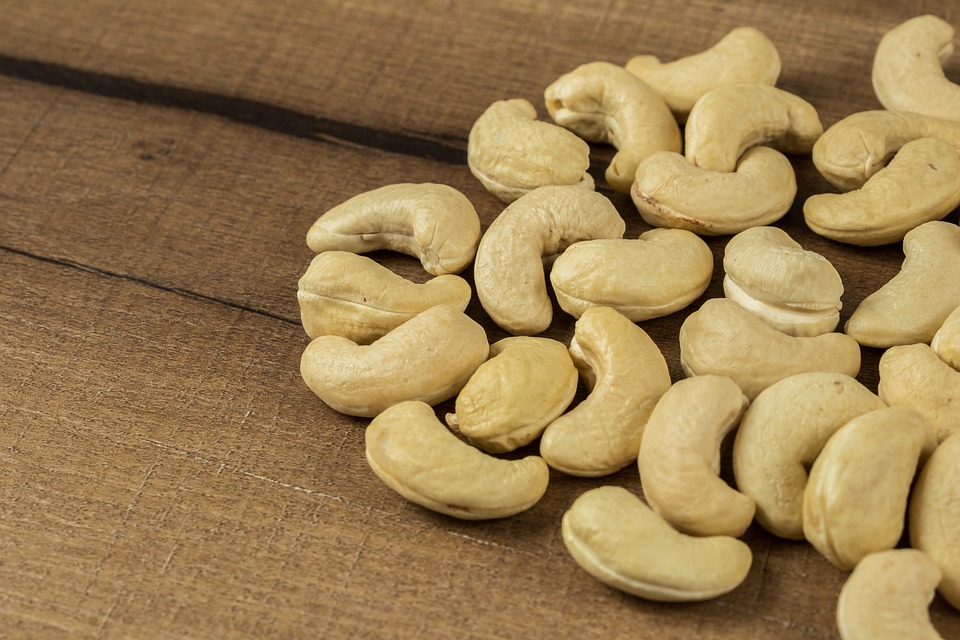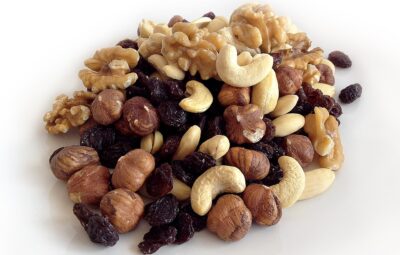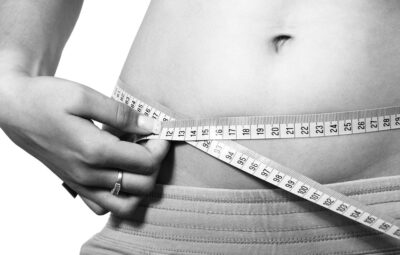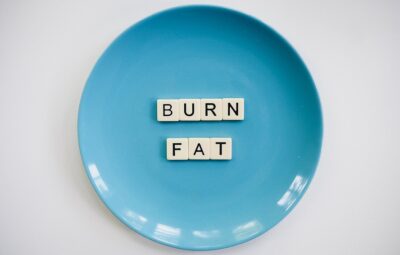When it comes to slimming down, some folks have forgone the traditional approach of counting calories and have instead chosen to track their macronutrient intake. Macros—short for macronutrients—include carbs, proteins, and fats. Basically, keeping track of macronutrients means counting the number of grams of each of these nutrients you have each day, aiming to hit a certain goal. The technique is an indispensable part of diets such as the ketogenic diet.
Supporters of counting macros argue that it aids in weight loss, increases the eating of nutritious foods, and causes a feeling of wellness. However, some people might be put off by the necessity of completing calculations each day and the amount of effort involved. Wondering if it’s worth the effort? This article will provide a thorough explanation of how to measure macros, as well as some knowledgeable guidance on whether employing this method could help you accomplish your health and weight-loss objectives.
What Are Macros, Anyway?
Macros, or macronutrients, are large groups of nutrients.
There are three main macronutrients: Protein, carbohydrates, and fat.
The majority of consumables and drinks consist of a mix of the three macronutrients. However, there are certain foods that mainly consist of one macronutrient, which supplies most of its caloric value.
For example:
- Brown rice is mostly carbohydrate but also has a bit of protein and fat.
- Cashews are mostly fat but also contain protein and a bit of carbs.
- Lean chicken breast is mostly protein but also contains some fat. It doesn’t contain any carbohydrates.
Each macronutrient provides a certain number of calories:
- 1 gram of protein = 4 calories
- 1 gram of carbohydrate = 4 calories
- 1 gram of fat = 9 calories
- (1 gram of alcohol = 7 calories)
Consequently, keeping track of macronutrients leads to monitoring the amount of calories consumed.
Why Are Macronutrients Important?
Your body process macronutrients in order to complete certain tasks inside the body.
For example:
- Proteins break down into amino acids, which can affect our muscle composition, and are involved in creating mood-regulating neurotransmitters.
- Carbohydrates break down into sugars, which give us energy for immediate use but also storage.
- Fats break down into fatty acids, which help form certain structures of our body, like our brain, nervous system, and cell walls.
Macronutrients not only affect your physical weight and composition, but they can also have an effect on how you might act, how well you do something, and even how you feel.
How to Count Macros
If you plan to begin to monitor your macronutrients, you should calculate your target macronutrient ratio – that is, the proportions of your total daily calories that will come from carbohydrates, protein, and fat. It’s like having a customized pie chart that considers your body’s power requirements, your weight ambitions, and your overall health status. This is a beginning resource to demonstrate how to accomplish it, stage by stage.
Step 1: Determine your daily calorie requirement.
Your body doesn’t just burn calories when you’re exercising. Jaclyn London, MS, RD, CDN, points out that much of our energy is used for fundamental body processes that keep our organs working. To determine your total daily energy output (TDEE), you have to perform a computation to quantify both static and vigorous activity energy output. Here’s how:
Estimate your basal metabolic rate.
The amount of calories your body needs to survive daily is determined by your height, weight, age, and gender and this is referred to as your Basal Metabolic Rate (BMR). The formula was initially established in 1918 and has been improved with changes over the years following. Keep in mind that any calculations for your personal metabolism made by yourself are just approximations.
Utilize one of the updated Mifflin-St Jeor equations to get an idea of your BMR. After obtaining the answer, round it to the closest integer.
- BMR for men = (10 x weight in kg) + (6.25 x height in cm) – (5 x age in years) + 5
- BMR for women = (10 x weight in kg) + (6.25 x height in cm) – (5 x age in years) – 161
Multiply for your activity level.
You should then consider your activity level on a daily basis to calculate your non-resting energy expenditure (NREE), which is the total number of calories burned due to movement. To calculate your calorie needs, take the BMR you worked out in the first step and multiply it by the figure that matches up to how active you are normally in a week. Again, round your answer to the nearest whole number.
- Sedentary (little to no exercise): BMR x 1.2
- Lightly active (light exercise one to three days per week): BMR x 1.375
- Moderately active (moderate exercise three to five days per week): BMR x 1.55
- Very active (intense exercise six to seven days per week): BMR x 1.725
- Extra active (very intense exercise six or seven days per week, or a physically demanding occupation): BMR x 1.9
Your response is a calculation of your Total Daily Energy Expenditure—the amount of energy your body requires daily.
Example calculation
This is what the calculation would be for a female aged 35, who has a normal level of physical activity, and a weight of 150 lbs (68 kg), with a height of 5’7” (170 cm).
Approximate Basal Metabolic Rate: (10 multiplied by 68) plus (6.25 multiplied by 170) minus (5 multiplied by 35) minus 161.
- BMR = 1,407 calories
It is calculated that the total daily energy expenditure for this person is about 2,176 calories according to their activity level.
- TDEE = 2,181 calories
Step 2: Factor in your weight goal.
TDEE is the amount of energy your body needs in order to sustain its current weight. When you burn more calories than you take in, you will experience weight loss. If you want to successfully track your macros and lose weight, it is advised that you aim to shed 1 to 2 pounds a week steadily as recommended in public health guidelines. To lose 1 pound on a weekly basis, an individual has to have a caloric deficiency of 500 calories per day, which is the total daily energy expenditure (TDEE) minus 500 calories, according to the Dietary Guidelines for Americans between 2015-2020. Speak to a doctor or nutritionist to create personalized, sensible, healthy objectives for weight loss before beginning any diet program.
Step 3: Figure out your ideal macronutrient ratio.
Once you’ve figured out the amount of calories you should consume daily, it’s time to work out what percentage should come from the three major nutrient groups. No single recommendation applies to everybody when it comes to nutrition. London reveals that your diet should be decided by taking into account your individual needs and preferences, any medications you take, your medical history, and what stage of life you are in.
Considering the Acceptable Macronutrient Distribution Ranges (AMDR) is a great place to start for the majority of healthy adults. These macronutrient ranges were determined by the National Academy of Sciences and have been linked to decreasing one’s chances of developing chronic illnesses. For an adult, the AMDR are:
- Carbs: 45–65% of calories
- Fat: 20–35% of calories
- Protein: 10–35% of calories
These are just general guidelines, London notes. She suggests consulting with a nutritionist or medical specialist to develop a custom-made plan if you have any health issues or anything related to health. For instance, those recovering from an operation may require a larger-than-normal amount of protein; at the same time, folks with diabetes may have to pay attention to how much carbohydrate they consume.
Step 4: Plug those values into a macronutrient calculator.
Once you know the number of calories you need daily, and the goal ratios of carbohydrates, fats, and proteins, you can assess how many grams of each should be consumed daily. Here’s how someone would calculate their macros based on a 2,000-calorie diet consisting of 50% carbs, 25% protein, and 25% fat:
Carbs (4 calories/gram)
- 50% of 2,000 calories = 1,000 calories of carbs per day
- 1,000 / 4 = 250 g of carbs/day
Proteins (4 calories/gram)
- 25% of 2,000 calories = 500 calories of protein per day
- 500 / 4 = 125 g of protein/day
Fats (9 calories/gram)
- 25% of 2,000 calories = 500 calories of fat per day
- 500 / 9 = 56 g fat/day
Step 5: Start tracking macros.
In order to track your macronutrients, you must keep a record of all the food you consume. You may choose whichever method works best for you: jotting down your thoughts in a journal, taking a note on your phone, typing something up on your computer, or using a particular app. Once you have picked a method, track the number of grams of carbohydrates, proteins, and fats you are eating at each meal and snack, and calculate the total for each one.
How to Track Your Macros
Once you have worked out how much of each macro you need, it is important to monitor and make sure that you are hitting your macro targets every day.
Many individuals take advantage of applications such as MyFitnessPal, Cronometer, or Macros+ for their nutritional purposes.
There are a couple of advantages to using an app:
- You have a quick reference guide for how much of each macronutrient a serving of a food contains.
- The app will add up your macros for you (and let you know how many you have left for the day).
You can also manually monitor your macros by keeping a paper logbook and referencing a nutrition source such as the USDA’s Food Data Central or SELFNutritionData.
Make a note of what you’ve eaten at every meal and how many grams of the major nutrients each food item has.
A lot of folks find that taking the time to plan out their meals for the subsequent day (or even the day of) can be beneficial. Planning ahead allows you to construct meals that align with your dietary needs rather than randomly selecting something to eat when you are famished and becoming tempted by a huge burrito.
Most apps also allow you to save meals. If you sometimes eat the same meals over and over, pre-entering or computation of the food combinations can streamline your tracking process.
Scheduling a meal at a restaurant ahead of time can be an effective approach if you’re aiming to stay within your predetermined dietary allotments. Look at the food choices before going to the restaurant and make an educated guess of the nutrients you will get with the food you select.
3 Common Questions About Macro Tracking
Once you have accurately determined your macro amounts, you may sense that you are in possession of the secret to achieving all your desired health and fitness objectives.
Until you actually have to eat.
“Wait…how do I do this in real life?!”
Below are some of the most typical queries people have regarding keeping tabs on macronutrients and what action to take in response.
Question 1: What do you eat on a macro diet?
Once you become familiar with monitoring your macronutrient intake, you will gain knowledge of which dishes have considerable amounts of protein, carbohydrates, and fat.
Macronutrient counting does not consider the vitamins and minerals found in whole, unprocessed foods which are referred to as micronutrients.
Micronutrients are necessary for good health. It is possible to achieve your caloric and macronutrient requirements by eating pizza, french fries, and drinking protein shakes, however, it is not recommended.
It is your responsibility as a macro counter to ensure that your diet provides you with the necessary macronutrients and micronutrients.
One simple way to do that?
Get your nutrients mainly from natural, unprocessed foods with lots of micronutrients: lean proteins, fruits, veggies, whole grains, legumes, nuts, seeds and oils.
If you don’t know where to begin, take a look at the image that is shown below. It is evident that while some edibles can easily be identified as belonging to a single macronutrient group, others have more of a blend of them.
Question 2: How do I measure my food?
It’s not quite Sophie’s choice, but people still wonder:
Do I need to use a measuring cup to quantify the quantity of food, or should I use a food scale to determine its weight?
Use a food scale for the best results. Quantitatively, weighing will consistently be more exact than gauging by amount.
As an illustration, about 100 grams of almonds can be held by a cup, whether it’s left in whole pieces or chopped. Chopping the almonds up into smaller pieces makes them easier to put into a container, and a single cup will hold up to 200 grams.
The weight of 100 grams will remain the same regardless of whether the almonds are in their entirety or chopped.
If the only choice you have is to use measuring cups and spoons, that’s okay. Be absolutely certain—especially when starting out—to use a measuring tool for each ingredient, rather than estimating it by sight.
Individuals are likely to envision a more substantial amount for a “tablespoon” or “cup” than what it really is, sometimes even unintentionally doubling the amount of their portion.
It should be noted that the preparation of certain items such as grain, noodles, and meat can alter their mass and amount. You should keep track of a food’s uncooked measurements if you are going to log it. If you measure it cooked, log it cooked.
If counting calories with scales and measuring cups is too tedious and depressing, there are alternative ways to monitor your intake.
For example, you could monitor your consumption by using estimated hand sizes. Our Macros Calculator can also give you estimated hand portions to save you from having to measure every single item (although if you choose to, that’s OK too!).
Question 3: How important is it to precisely hit my macros?
Consistency will get you the results you want.
However, this does not mean you need to precisely reach your targets every day.
If you are struggling at the moment, don’t throw in the towel and give up; making an effort half of the time is still better than not trying at all.
If you’re overwhelmed and struggling, give top priority to reaching your protein requirements on a daily basis. Consuming more protein in your diet has the potential to reduce feelings of hunger, protect your muscle mass, and boost your overall wellbeing.
Overall, aim for consistency over perfection. Attempt to reach your dietary macro targets on a daily basis, but don’t strain yourself to eat if you don’t feel hungry.
Would you prefer to have half an avocado instead of a bowl of oatmeal? Don’t stress about swapping fat for carbs.
Remember that we eat food, not nutrients.
Eating is much more than simply counting up the amount of protein, carbohydrates, and fat. Eating is not just an opportunity to fulfill your daily nutritional needs.
Eating is a way to enjoy yourself, be nice to your body, and spend quality time with those you care about.
Every meal provides an opportunity to build relationships– with yourself and with people around you. Every meal is a chance to take control of, manipulate, and renew your wellbeing.







